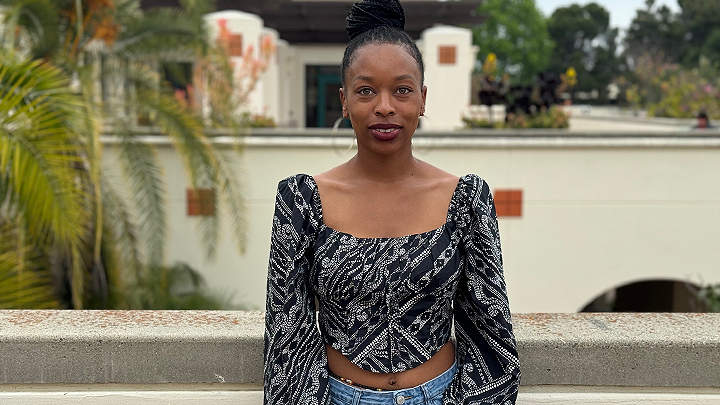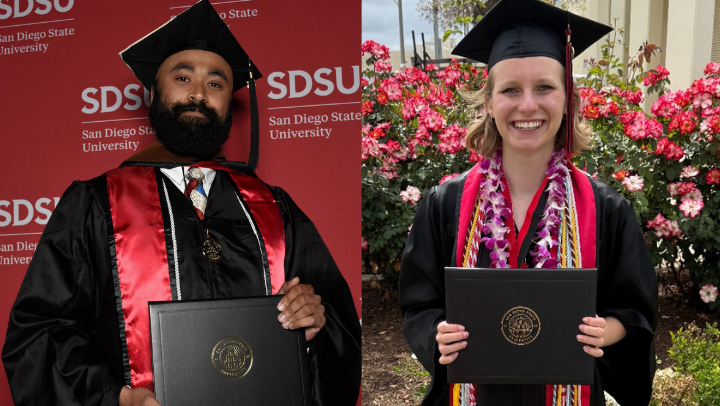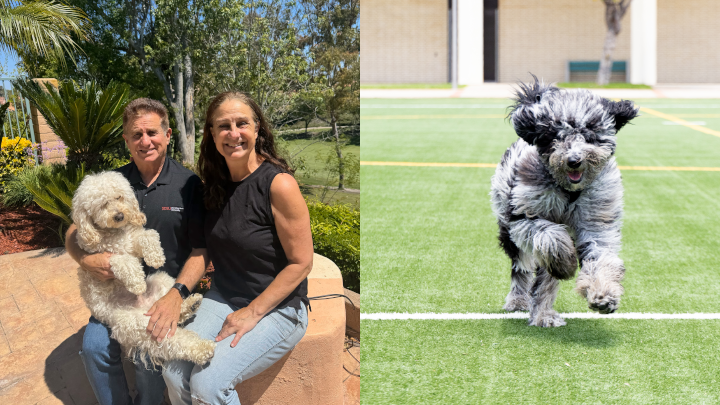SDSU international student secures coveted spot in Stanford’s Art History doctoral program
Kehinde 'Kennii' Ekundayo faced tumultuous path to fund her education, but her resiliency paid off
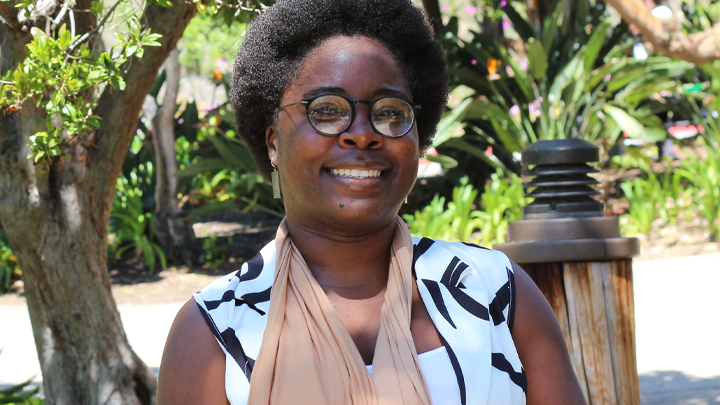
Kehinde “Kennii” Ekundayo laughs with ease these days, a levity that belies having to work multiple jobs, sell her blood to pay for college in her native Nigeria, or sometimes not be able to afford groceries during her graduate studies at San Diego State University.
Her high spirits stem from an email this spring from Stanford University, accepting Ekundayo into its Art History Ph.D. program.
Ranking among the top in the country, Stanford’s program is extremely selective. It typically admits fewer than eight candidates per year, according to its website.
“Certainly, I could say people who have a degree from an Ivy League institution regularly do not get admitted because it is so competitive,” said Gillian Sneed, assistant professor of Art History and area coordinator for Art History and Foundations. “We are very proud of Kennii for her achievement.”
Stanford is providing Ekundayo with a fellowship that pays her tuition and living expenses for five years. For her research, she also received a supplemental award through the university’s Enhancing Diversity in Graduate Education (EDGE) Fellowship.
This is uncharted territory for Ekundayo, who will graduate this month from SDSU’s interdisciplinary Master of Arts in Liberal Arts and Sciences (MALAS) program.
“Since starting my undergrad at 16, when I left home, I’ve had to fund myself,” she said. “And now at Stanford, I get this amazing opportunity to focus on my education and my research without having to focus on where my tuition is going to come from.”
Her SDSU community of faculty mentors, classmates and friends expects big things.
“Look out world,” said SDSU English and Comparative Literature Professor William Nericcio, who heads the MALAS program. “Her support package is extraordinary. For this brilliant woman who has been scrabbling together monies to cover living expenses, it could not have happened to a better person.”
Hustling for Art
Raised by a single mom, Ekundayo paid her way through college in Nigeria working as a courier, cosmetics salesperson, and other odd jobs.
She began freelancing for a local artist friend, helping curate events. Prior to that, she had rarely visited a gallery or museum. Her major was French.
During an exhibit at a hotel, Ekundayo recognized a Nigerian state governor and his entourage in the lobby.
“I ran after him, and the security was like, ‘Go away girl,’” she recalled. “I said I am trying to invite you to a show that just opened. I made a spectacle and he said, ‘OK, I am going out now, but I will stop by when I return.’”
The official kept his word. “He bought so many works that day. We had never sold anything like that before,” she said.
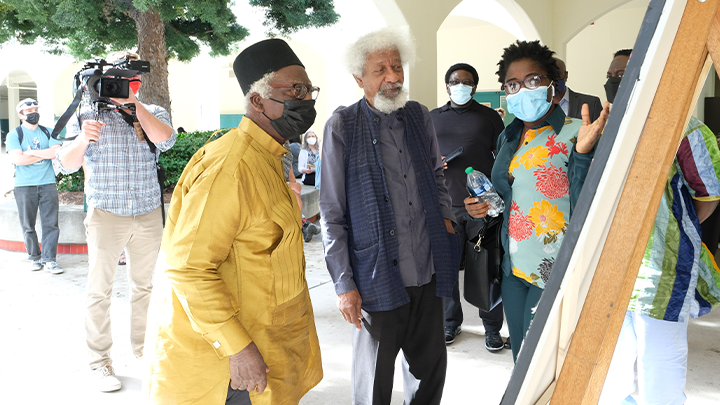 Open the image full screen.
Open the image full screen.That got Ekundayo on the artist’s payroll and hooked her on the vibrant creative scene in Lagos where she began meeting people and learning all she could about contemporary African art and curating shows.
Coming to San Diego
Looking for freedom to pursue her ideas, Ekundayo quit her job. She had built relationships with prominent gallery operators and Nigerian artisans. As a newcomer to the art scene, she occasionally felt the sting of elitism. But she persisted.
“The thing about me is I say yes to everything,” she said. “And even if, at the end of the day, I say I do not want to do this again, at least I did something.”
At a film festival in Lagos, Ekundayo met SDSU Professor Niyi Coker, director of the School of Theater, Television, and Film. The encounter led to a plan for a retrospective at SDSU of works from iconic African artist Bruce Onobrakpeya, accompanied by Nigerian Nobel Laureate Wole Soyinka.
She had previously worked with both men, and CNN’s African Voices Changemakers featured her retrospective of Onobrakpeya’s career.
Ekundayo curated the show and spent her life savings shipping art to the U.S. The exhibit opened in February 2022 in the SDSU University Art Gallery.
“For 20 years, I took students to London for a study abroad program, and this show was of a quality that I was accustomed to in London, where the museums are amazing,” said Nericcio.
Sneed also was impressed. “I felt like this older generation, Bruce and Wole, had identified Kennii as being this bright star for their country.”
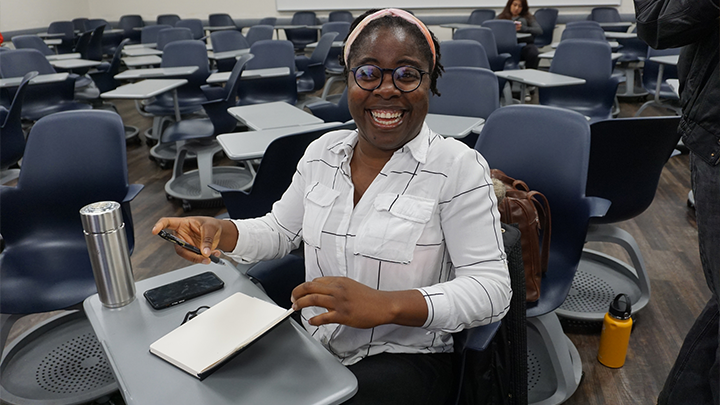 Open the image full screen.
Open the image full screen.After the show, Ekundayo flew back to Nigeria. But she wanted to further her education. She had applied to a prestigious art college in the United Kingdom but could not afford to go.
Nericcio lobbied her to apply to SDSU. “I asked for funding,” said Ekundayo. “He said sorry, there is no funding. I was like, well, this is a dead end.”
She recalls Nericcio saying, just start with the application and everything will work out.
Next Chapter
Ekundayo enrolled in August 2022. She is a paid research assistant for Nericcio, works as managing editor of SDSU University Press, grades papers for professors, is a teaching assistant, and makes time to participate in campus activities.
“She is very active, knows everybody, gets out there and goes to all these events, just works her butt off,” said Sneed.
Ekundayo received a scholarship to travel to Brazil last summer for research on her master’s thesis, a comparative analysis of how Brazilian and Nigerian artists are shining light on climate change and flooding.
“She did a tremendous job of expanding her network on that trip in a short amount of time,” said Kristal Bivona, an SDSU assistant professor of classics and humanities and associate director of the Behner Stiefel Center for Brazilian Studies. “It is impressive how she can contact people she has never met before, make plans and just get in there.”
Ekundayo is still wrapping her head around her academic journey to Stanford, where she plans to research recent refugee artists in the U.S. She is grateful to all her mentors and supporters, especially Nericcio, who is the reason she came to SDSU.
“When people are kind to you, you are able to perform at your peak,” she said.

